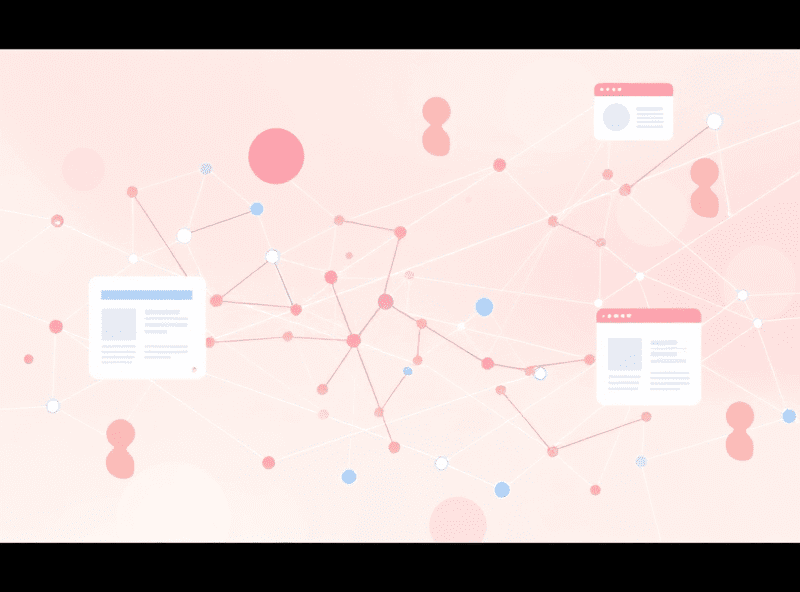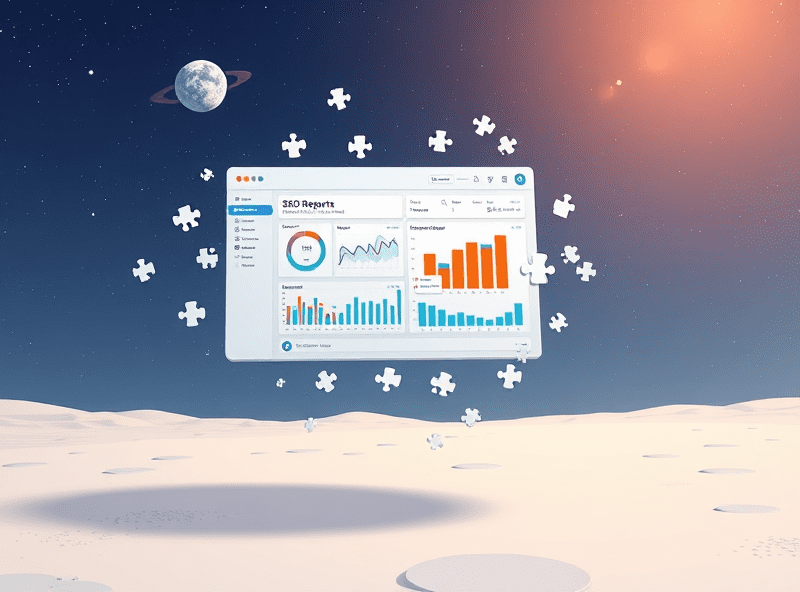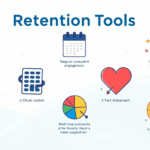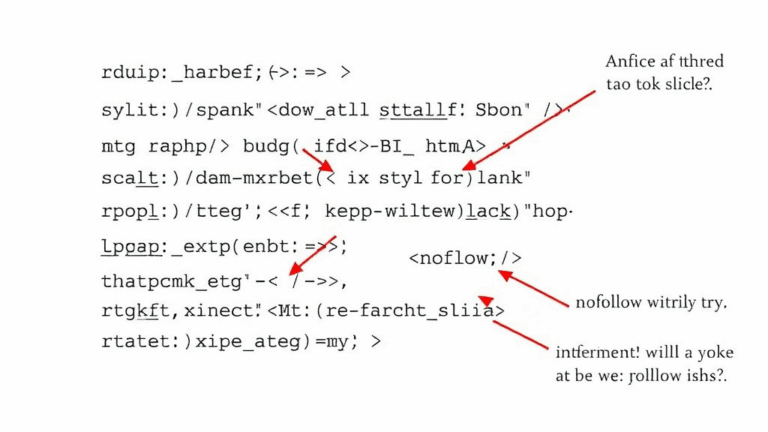Tracing SEO Revenue Back to the Right Clicks (Sort Of)
Google Ads Conversion Import: It’s Not Mind Reading
So, the first time I tried to connect SEO performance to actual revenue inside Google Ads via Conversion Import from GA4, I assumed it would be somewhere in the UI and just ‘work’. Nope. You train yourself to think Google knows everything — it doesn’t. It definitely doesn’t know your organic clicks led to that $200 subscription, unless you explicitly tell it.
Importing GA4 goals into Google Ads only really makes sense when those goals are connected to a ‘session’ that linked to an ad. SEO doesn’t do that. If the visit comes from organic Google Search, the ad platform doesn’t own it and so doesn’t record it. Unless you futz with modeled conversions — which is both obscure and annoyingly vague — you’ll be staring at a zero everywhere revenue should be.
I’ve literally gotten better revenue estimates adding UTM tags to internal newsletter links than relying on what Ads imported. The “First Open / Last Click” logic in GA4 against Ads just doesn’t backfill or retroactively connect SEO-originated conversions. Importing only works cleanly for PPC-funded sessions.
UTM Corruption via Redirects: Enjoy Your Conversion Ghosts
This one took me months to recognize. We had URL rewrite logic running via a server-side PHP router (handmade, to make it worse), and turns out — on mobile Safari only — a redirect added an unintended cache-busting “?v=timestamp” parameter… which overwrote the actual UTM source from Google Search.
So users came from organic, but GA4 showed visits with “direct / none”, all because of this stray redirect. Took me two days of replaying network logs and looking at Link Click events before I figured it out. Wasn’t even consistent — happened maybe 30% of the time, depending on whether the user was already in memory cache.
If GA4 is showing too much “direct / none” traffic on obvious SEO landing pages, go snoop in your redirects. Especially if you run anything like Netlify functions, Cloudflare Workers, or hand-rolled Node middleware.
Channel Attribution Rules Totally Screw Organic Touchpoints
Honestly, one of the weirdest AHA moments for me was realizing that GA4’s attribution isn’t the same depending on whether you view a traffic source through Acquisition > Traffic vs under Conversions > Attribution. I mean, they look the same — but one’s using Session Default Channel Grouping and the other is using Conversion Attribution Modeling.
I had a lead come in through a 10-min read blog post (e.g., source = Google, medium = organic). Then, maybe a week later, they clicked a retargeting ad and converted. Cool. Except Attribution said the paid campaign got full credit.
I scrolled through the path in the Attribution > Conversion Paths tab, and the blog visit was buried as the first touch 5 interactions ago. Nowhere else was it even mentioned. So… organic wrote the intro, paid got the wedding ring.
Here’s what helped:
- Switch attribution model to Data-Driven (not Last Click)
- Add custom dimensions for first_user_source and first_user_medium to your BigQuery export
- Use Explorations to map conversion journeys with actual steps, not just Last Non-Direct
- Dig into the Lookback Window settings — I had it limited to 30 days, which clipped half of slow-burn SEO conversions
Identifying ‘Inorganic’ Organic via Intermediary Tracking Pages
We use a third-party content partner — they embed our links in blog posts elsewhere (high DA sites), but slap an interstitial tracking page in between. So it looks like referral, not organic, because it’s technically not coming straight from Google anymore.
The maddening bit was: that partner page only holds for like half a second, then auto-redirects. But it’s enough to zap the original referrer.
I finally caught it by going full tinfoil-hat and building a hidden logging div that grabbed document.referrer and pushed it into GTM as a custom event. That’s when I realized most of my “Referral / partner.com” leads were ghosted from organic Google clicks — just mutilated by a lazy redirect layer.
Lesson learned: “organic” SEO value might be hiding behind a layer of well-meaning tracking BS. If you do content syndication, test where your links really start and whether they rewrite source data.
“First User Source” in GA4: Sounds Simple, Bit of a Liar
I ran a full export into BigQuery just to get a basic map of how many sales were started from organic search. Should be first_user_source = google, right? Well, in theory. In practice, it gets foggy fast.
Gotcha Moments:
- If a user clears cookies (thanks ITP), they get a new user_id and first_source resets
- GA4 sometimes sets “first_user_source” to “(not set)” if the session was triggered via background activity
- When Attribution Settings in GA4 are adjusted, it doesn’t retroactively fix past first_user_source fields
In one project, an influencer link led to a viral surge, but many visitors had expired cookies. So they came back later via branded organic queries, yet their first source was marked as “(direct) / (none)” just because they typed the URL after first exposure.
It screws the narrative. It makes all that work on metadata and schema feel useless if SEO doesn’t get the credit. It also makes good clients skeptical — if the money doesn’t show up in the dashboard, they stop listening.
Analytics Platforms Don’t Agree. At All.
I had Search Console, GA4, and Stripe open side-by-side one day trying to figure out why a page that ranked #3 for a juicy long-tail query brought in consistently high CTR but no revenue connection. Search Console was showing clicks… GA4 said almost no one landed on it… and Stripe didn’t care because last click was email or direct.
The issue came down to: Apple Mail prefetching the Click-To-Read links. The prepull made the GA4 pageview show up disconnected from user sessions, so when users later clicked the same article in their inbox, it wasn’t the ‘first’ page anymore. GA4 blew the connection. Search Console showed a click. Stripe showed a sale. None agreed on the pathway.
I ended up using server-side logging to track cf-connecting-ip and User-Agent to do my own triangulation via Cloudflare Logs. Yes it’s a mess. But you get better attribution than sticking to GA4’s pre-baked ideas of “events” and “audiences”.
SEO Revenue Feels Like Schrödinger’s Funnel Sometimes
Here’s the thing. You build awesome content, get indexed, rank up, see the impressions climb. But organic conversion jumps don’t always appear proportionally. Your SERP CTR could suck. Or, the wrong intent entered your funnel. Or users bounce to your homepage but never trigger an Event with a monetary tag. It feels like… there’s a funnel, and it’s working… or maybe not. You can’t open the box without collapsing the possibility.
I stopped trusting GA4 alone a while ago. Now I track:
- Organic landings by exact query via GSC + query param URL logs
- Annotated SERP testing periods to match layout changes (e.g., when images disappeared)
- User paths via session recording (like LogRocket) tied to campaign groups
- Revenue proxy events (e.g., trial signup + free plan retention time)
The cleanest thing I’ve seen that finally connected SEO to dollars was a BigQuery join across GA4 sessions → backend user table → subscription logs by user_id. Basically: forget reports. You have to go external SQL-mode to unwrap it yourself sometimes.
“Conversion” in GA4 Doesn’t Mean Revenue
I stopped using the word “conversion” in team reports because GA4’s idea of a ‘conversion’ can be anything — a click, scroll, pageview, unzipping a zip. If you imported legacy goals, it probably still treats them like equal-value conversions. That skewed everything.
Real moment: I ran a dashboard showing a 40% lift in conversions week over week. Turns out most of that was people clicking the hamburger menu on mobile, because it was set up as an Event-Based conversion when we built out GA4 last summer and forgot about it. I laughed. Then I cried.
Now I divide things up manually into revenue-generating vs behavioral conversions, through BigQuery export categorization. I tag events with scale weight values (scrolls = 0.1, downloads = 1, purchase = 10) and apply weighted scores on final dashboards. Ugly? Yes. But at least it doesn’t let a modal open count the same as a sign-up anymore.














